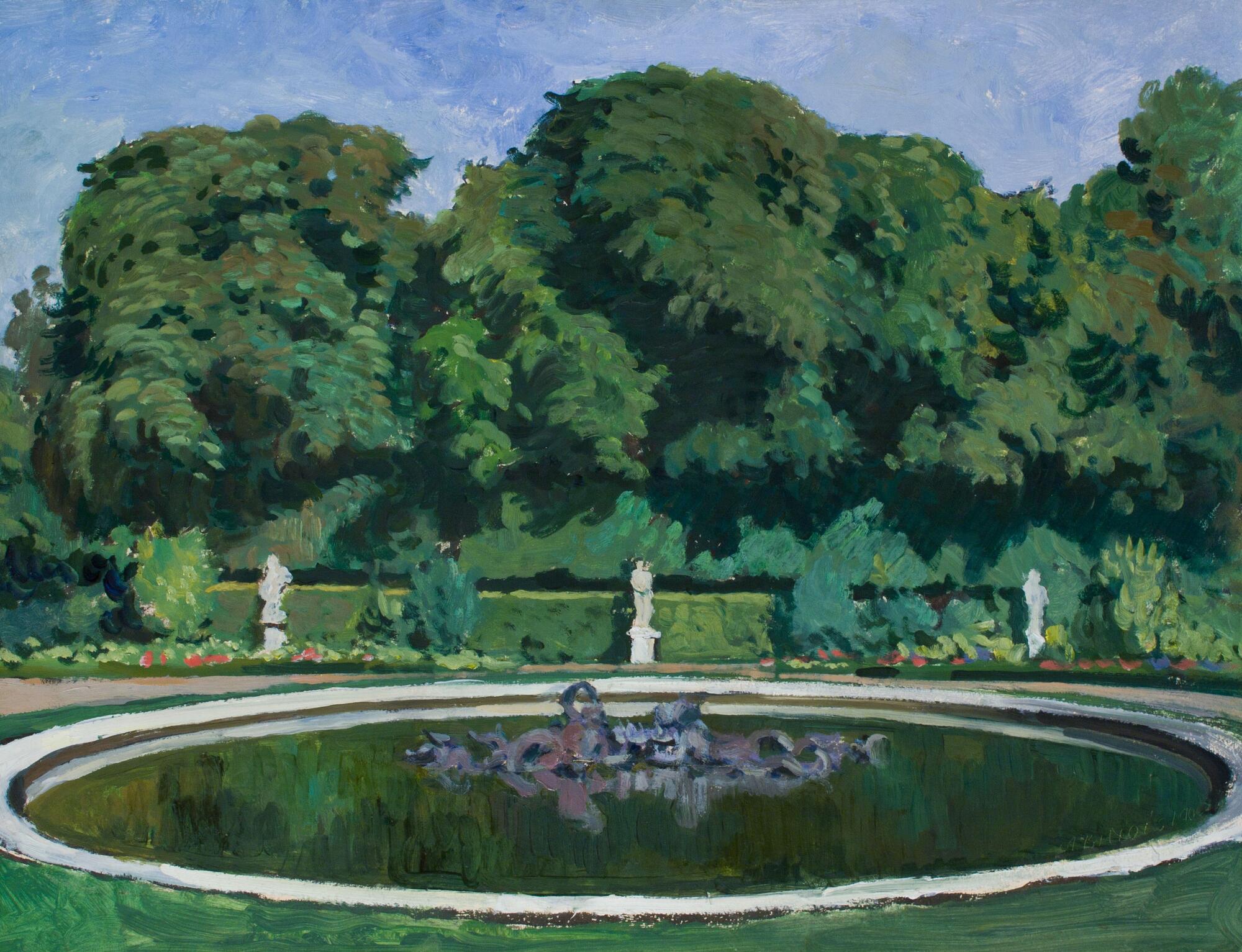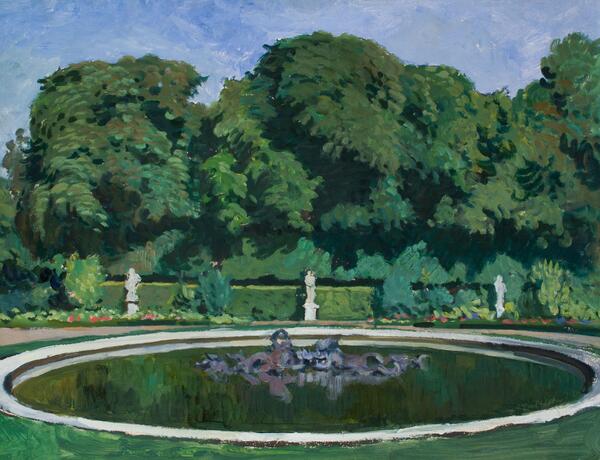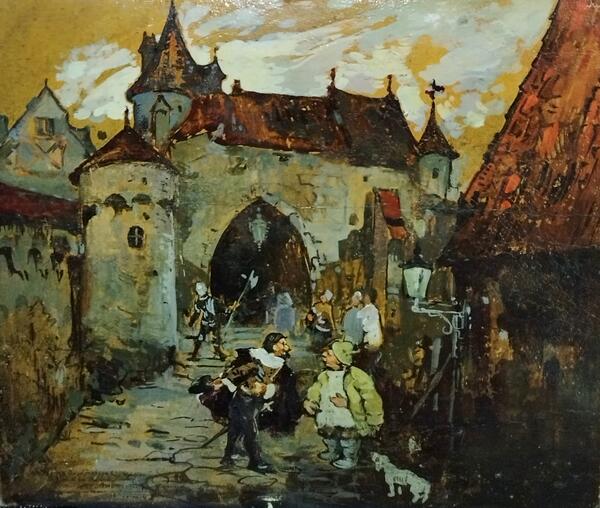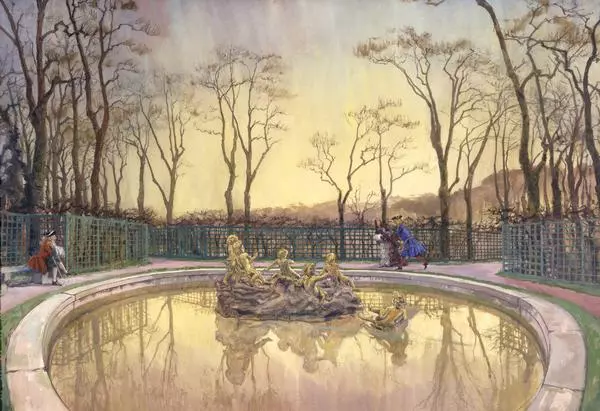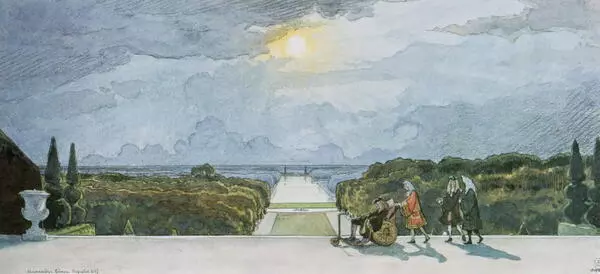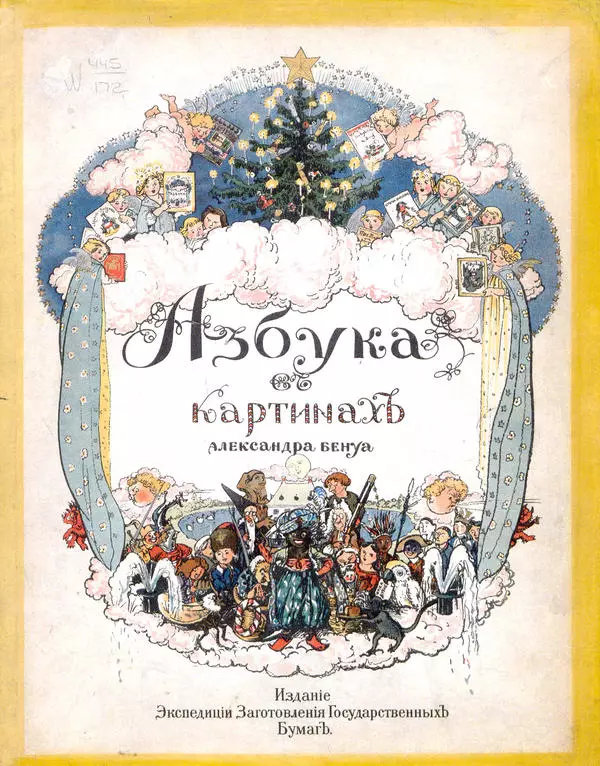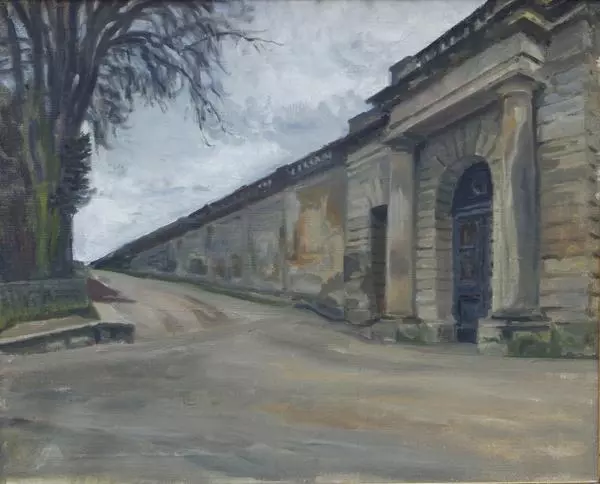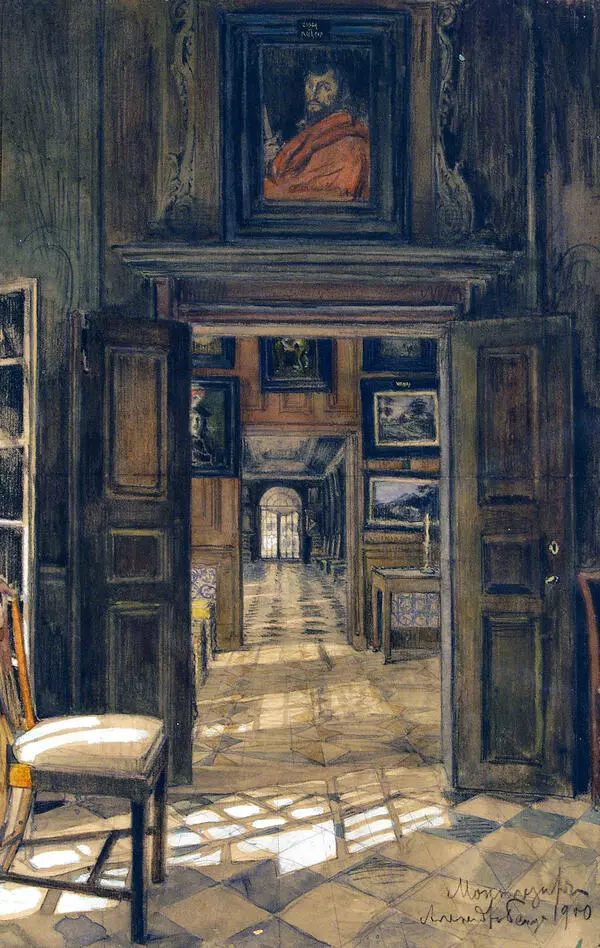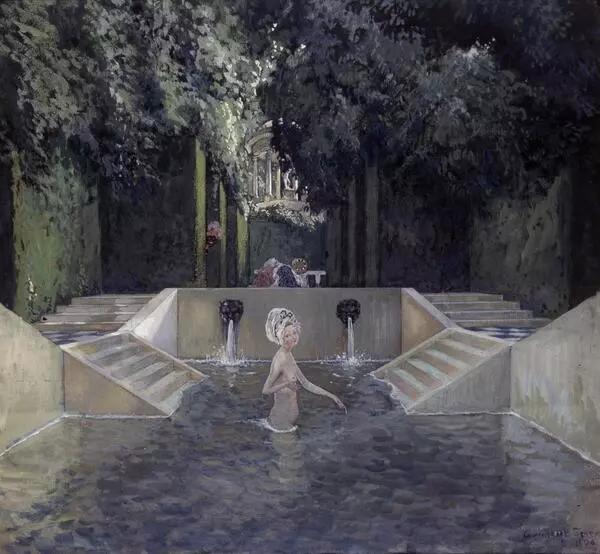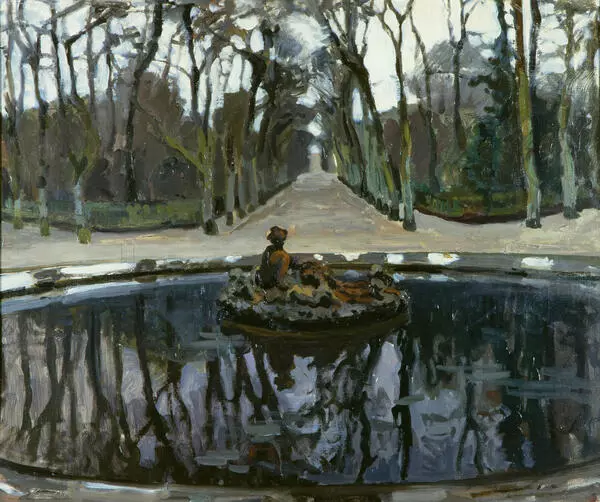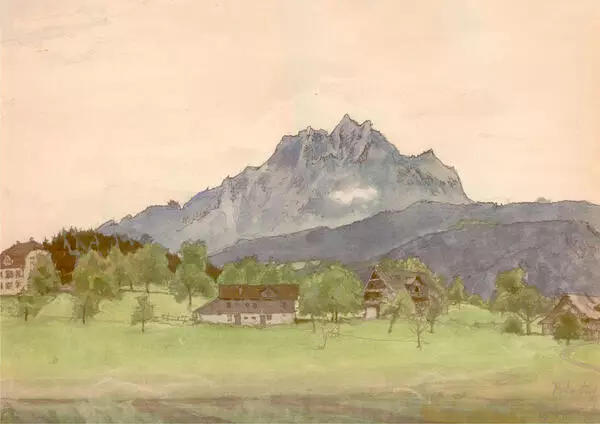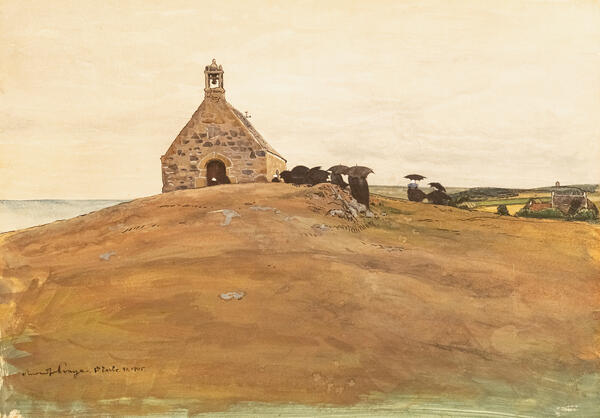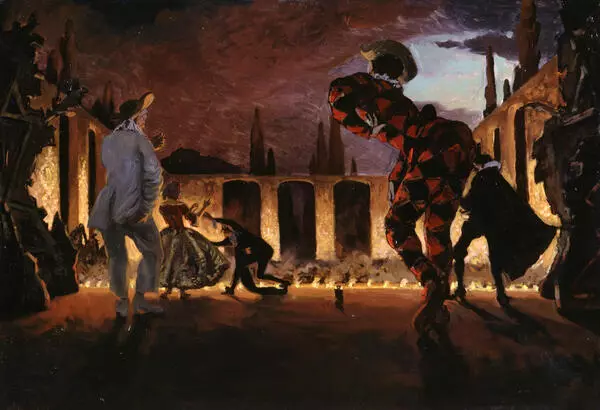Alexandre Benois was a Russian artist, art historian, art critic, founder and main ideologist of the art association ‘The World of Art’. He also founded a magazine of the same name. The strongest passion throughout Benois’s life was theater. He was a reformer of Russian theater and scenery painting. As a theater decorator and director, Alexandre Benois worked for many theaters.
Benois’s favorite theme was the era of the French king Louis XIV, and the artist’s favorite subject was the gardens and parks of Versailles. This residence of the French kings in the suburbs of Paris is an internationally recognized masterpiece of the palace and park ensemble. Benois’s series of works dedicated to Versailles in the 17th century are based on numerous field observations.
For the first time he saw Versailles in the form of a theatrical scenery in 1890 in Saint Petersburg, at the Mariinsky Theater at the ballet The Sleeping Beauty. Benois recalled that he was shocked by the extraordinary scenery that reproduced Versailles. The artist’s direct acquaintance with the park and palace took place in 1896. He later returned to France and lived here in 1905-1907, admiring Versailles every day. The Versailles Series by Alexandre Benois is an opportunity to remind you of how many generations have seen the Versailles Park in their lifetime, and thus to speak of the immortality of art and the transience of human life.
In the works of the Versailles series, nature and history appear in an inseparable unity. The architectural structures, sculptures and alleys of the famous residence of the French kings are like silent witnesses of an irrevocably gone great era, keeping the memory of the creators and owners of the Versailles ensemble. The landscape is distinguished by its simplicity of composition – symmetry and harmonious integrity of the color scheme. One gets the feeling that the painter wanders lonely along the long-depopulated alleys that have fallen asleep, listening with sadness to the silence.
High mastery allowed the artist to present the image of Versailles Park as the image of an entire era, which developed its own etiquette, fashion and majestic style. Benois’s ‘Versailles’ legacy includes over six hundred drawings, watercolors, pastels, gouaches, prints and canvases, testifying that Versailles remained a constant source of his inspiration, at least until 1926.
Benois’s favorite theme was the era of the French king Louis XIV, and the artist’s favorite subject was the gardens and parks of Versailles. This residence of the French kings in the suburbs of Paris is an internationally recognized masterpiece of the palace and park ensemble. Benois’s series of works dedicated to Versailles in the 17th century are based on numerous field observations.
For the first time he saw Versailles in the form of a theatrical scenery in 1890 in Saint Petersburg, at the Mariinsky Theater at the ballet The Sleeping Beauty. Benois recalled that he was shocked by the extraordinary scenery that reproduced Versailles. The artist’s direct acquaintance with the park and palace took place in 1896. He later returned to France and lived here in 1905-1907, admiring Versailles every day. The Versailles Series by Alexandre Benois is an opportunity to remind you of how many generations have seen the Versailles Park in their lifetime, and thus to speak of the immortality of art and the transience of human life.
In the works of the Versailles series, nature and history appear in an inseparable unity. The architectural structures, sculptures and alleys of the famous residence of the French kings are like silent witnesses of an irrevocably gone great era, keeping the memory of the creators and owners of the Versailles ensemble. The landscape is distinguished by its simplicity of composition – symmetry and harmonious integrity of the color scheme. One gets the feeling that the painter wanders lonely along the long-depopulated alleys that have fallen asleep, listening with sadness to the silence.
High mastery allowed the artist to present the image of Versailles Park as the image of an entire era, which developed its own etiquette, fashion and majestic style. Benois’s ‘Versailles’ legacy includes over six hundred drawings, watercolors, pastels, gouaches, prints and canvases, testifying that Versailles remained a constant source of his inspiration, at least until 1926.
